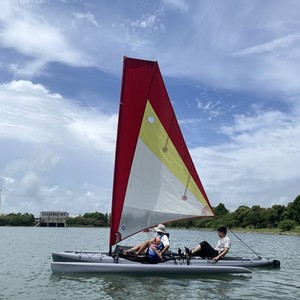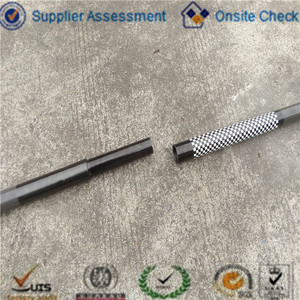(545 products available)














































































































































































The mast sails are a vital part of sailing vessels. They come in various types, each designed to suit different sailing needs and conditions. Here are the main types:
Classic Sails
The traditional sailboats are crafted from cotton, canvas, or linen. These materials are used as mast sails. They are known for their durability and ease of repair. Additionally, they have a vintage aesthetic appeal. However, they require more maintenance than modern materials. Also, they are less efficient when compared to contemporary counterparts.
Modern Sails
These sails are made from synthetic materials like Dacron, Mylar, or Carbon Fiber. They are more durable and require less maintenance than traditional materials. In addition, they are more efficient and offer better performance. Nevertheless, they are more expensive and can be more difficult to repair.
Flexible Sails
These sails are made from a combination of materials to create a more durable and flexible sail. For instance, they may have a Dacron base with Mylar or Carbon Fiber reinforcements. Thus, they can withstand more stress and have a longer lifespan. However, they are more expensive than traditional or modern sails.
Specialty Sails
These sails are designed for specific purposes. For example, they include racing sails, cruising sails, and heavy-weather sails. Racing sails are made for speed and have a greater shape than cruising sails. Conversely, heavy weather sails are reinforced for durability and can withstand strong winds. These specialty sails are more expensive and require more maintenance than standard sails.
Soft Sails
These are the most common type of sail used on small to medium-sized boats. They are made from woven polyester or Dacron and are easy to handle and maintain. These sails are further categorized into:
Hard Sails
These sails are used on larger sailing vessels and are made from rigid materials like fiberglass or carbon fiber. They are more durable and require less maintenance. In addition, they perform better in strong winds. However, they are more expensive and heavier than soft sails.
Hard sails are further categorized into:
Yacht masts and sails are vital components of any sailing vessel. They are used in various applications, from leisure sailing to commercial shipping. Here’s a look at some of the key usage scenarios:
Recreational Sailing
This is the most common application for yacht masts and sails. Recreational sailors use monohull and multihull masts and sails to enjoy leisure activities on the water. These vessels are designed for easy handling and fun performance, making them ideal for day sailing and casual racing.
Competitive Racing
Racing yachts require specialized masts and sails for optimum performance. Carbon fiber masts offer the best strength-to-weight ratio, providing rigidity and lightness essential for competitive racing. High-tech sails, such as those made from mylar or aramid fibers, are designed for maximum speed and efficiency. These sails are crafted using advanced techniques like precision laser cutting to maintain their shape and provide superior performance under varying wind conditions.
Long-Distance Cruising
Masts and sails are crucial for yachts embarking on long-distance cruising adventures. Masts are often equipped with multiple sails, including a mainsail, genoa, and sometimes a spinnaker, to catch the wind from different angles and ensure continuous propulsion. For instance, a cutter rig, which features a mast with multiple sails, is a popular choice for cruising yachts. This configuration provides greater flexibility in sail area adjustment and allows for better wind distribution across the mast. Moreover, the durability and maintenance aspects of the masts and sails are tailored for long voyages.
Commercial Shipping
While modern commercial vessels primarily use engine power, traditional sailing vessels still operate in the shipping industry. Tall ships and wind-powered cargo vessels utilize large masts and sails to harness wind energy, supplementing their engine power and reducing fuel consumption. These vessels are often employed in niche markets, such as transporting organic products or goods with a desire for sustainable shipping practices.
Marine Research and Education
Masts and sails are used in marine research and educational purposes. Research vessels equipped with masts and sails study marine ecosystems, climate change, and oceanographic phenomena. These vessels provide platforms for scientists to conduct experiments, collect data, and observe environmental changes in remote ocean locations. Additionally, maritime schools and training programs use masted boats with sails to teach sailing techniques, navigation, and seamanship skills to aspiring sailors and maritime professionals. Students learn the intricacies of sail handling, mast maintenance, and the art of harnessing wind power for various marine applications.
Several factors should be considered when choosing masts and sails. It is important to analyze the material of the sails and the mast. Most sails and masts are manufactured from fiberglass, carbon fiber, or aluminum. Fiberglass offers a good balance between cost and performance. Aluminum masts are more affordable than carbon fiber masts but heavier and less durable. Carbon fiber masts are lighter and more durable than aluminum masts but more expensive. The material is an important factor that determines the durability and performance of the mast and sails.
Another factor to consider is the compatibility between the mast and the sail. The mast and sail should be compatible to ensure performance and to fit properly. Check the specifications and requirements of the sail and mast and ensure they are compatible. It is also important to consider the brand because some brands require specific masts and sails.
It is also important to consider the usage when choosing masts and sails. Consider how the mast and sails will be used and the conditions in which they will be used. This will help determine the material and design that will suit one's needs. For example, if racing, a lightweight carbon mast and high-performance dacron sails are required. If cruising, a durable fiberglass mast and versatile sails are required.
Budget is another important factor when choosing masts and sails. It is important to set a budget and find a mast and sail within that budget. Masts and sails come in various price ranges, so it is important to find one that is affordable and meets performance requirements.
When it comes to masts, their function is to support the sails. The larger the sail, the more stable and strong the mast should be. Some masts can also carry additional equipment, such as lights or antennas. Masts can also be used to carry rigging that helps to steady the mast itself. The function of masts in sailing is to enable the vessel to capture wind and propel itself.
Masts can be made of various materials, with carbon fiber and aluminum being the primary materials. In addition to these materials, wood is also used for some masts, particularly on classic yachts. Carbon fiber masts are lightweight and strong, which makes them an excellent choice for performance racing yachts. Aluminum masts are stronger than carbon fiber masts, which makes them a good choice for larger vessels. Wooden masts have aesthetic appeal and are more robust than carbon fiber masts.
The primary function of sails is to harness the wind and propel the vessel. Sails are primarily made of materials like Dacron, Mylar, and Carbon fiber. Dacron sails are durable and cost-effective, making them an excellent choice for cruising yachts. Mylar sails are lightweight and more robust than Dacron sails, which makes them a good choice for racing yachts. Carbon fiber sails are strong and lightweight, providing excellent performance for high-end racing yachts.
Design
Masts
Masts can be designed to be either solid or hollow. Solid masts are more robust, while hollow masts are lighter. The design of masts also includes sections. The mast can have a round, oval, or rectangular cross-section, which can impact the aerodynamics and strength of the mast.
Sails
Sails are designed to come in different types and sizes. The most common type of sails are the square and triangular sails. Square sails provide power at following and quartering winds. Triangular sails are more versatile and provide better performance at wind angles. The size of the sails is proportional to the size of the vessel and the mast.
Q1. What are the different types of sails for yachts?
A1. Mainsail, headsail, genoa, spinnaker, and mizzen sail are some of the common types of yacht sails. Each sail has a unique role in propelling the yacht and can be used in a variety of wind conditions.
Q2. What factors should be considered when choosing yacht sails?
A2. When choosing yacht sails, one should consider the sailing style, material, durability, and maintenance.
Q3. What is the purpose of yacht masts?
A3. Yacht masts are vertical poles that support the sails and hold the rigging. They are crucial in providing the structure needed for sail stability and aerodynamics.
Q4. What are some common types of yacht masts?
A4. Some common types of yacht masts include alloy masts, carbon fiber masts, and steel masts.
Q5. What does sail maintenance involve?
A5. Sail maintenance involves cleaning the sails, inspecting them for signs of wear and tear, repairing any damage, and ensuring they are stored properly when not in use.
Q6. What is the relationship between sail area and yacht performance?
A6. The sail area is directly proportional to the performance of the yacht, especially its speed. The larger the sail area, the more wind it captures, and the faster the yacht tends to move.
Q7. What is the purpose of a mainsail?
A7. Mainsail, which is attached to the mast and boom, is the largest sail on the yacht. It is the primary source of propulsion and plays a vital role in determining the yacht's speed and maneuverability.